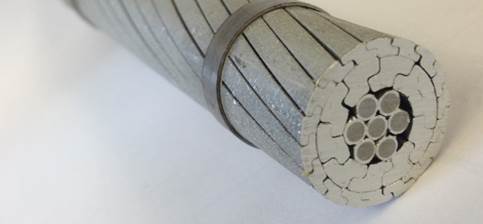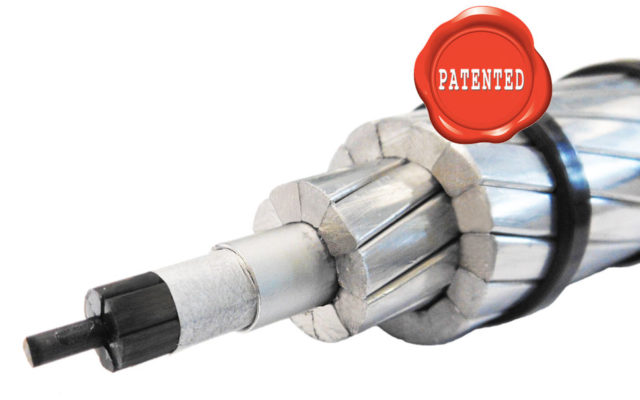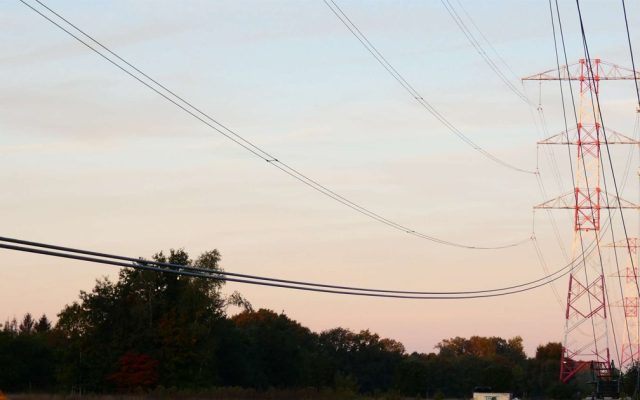In an era of rapidly evolving energy needs and environmental concerns, the field of power transmission is witnessing a remarkable transformation. De Angeli Prodotti, a distinguished industry leader, has been at the forefront of this revolution. Their groundbreaking High-Temperature Low Sag Conductor (ACCM) is redefining the landscape of power transmission, offering unparalleled efficiency and sustainability.
An overhead power line is a structure used in electric power transmission and distribution to transmit electrical energy across large distances. It consists of one or more uninsulated electrical cables (commonly three-phase power) suspended by towers or poles.
Since most of the insulation is provided by the surrounding air, overhead power lines are generally the least costly method of power transmission for large quantities of electric energy.
Electric power transmission was accomplished in 1882 with the first high-voltage transmission between Munich and Miesbach (60 km). 1891 saw the construction of the first three-phase alternating current overhead line on the occasion of the International Electricity Exhibition in Frankfurt, between Lauffen and Frankfurt.
Since the 80s, De Angeli Prodotti designs and supplies conductors for overhead power lines, following all the national and international standards. The mutations of regulations, that avoid and hinder the possibility to build new lines in the most developed countries, the climate changes and the unstoppable growth of the energy demand, brought to the need of re-powering the existing grids.
For this reason, starting from 2000, De Angeli Prodotti successfully revised, designed and supplied countless technological solutions for any aluminum conductor for the Overhead Power Lines.
What is an ACCM (Aluminium Conductor Composite Multistrand)?
ACCM, short for Aluminium Conductor Composite Multistrand, stands as the epitome of innovation in the realm of overhead power line conductors. It seamlessly integrates all the benefits of a High-Temperature Low Sag (HTLS) conductor.
ACCM has proven its mettle through a myriad of rigorous type tests, often in conjunction with compatible compression clamps, piquing the curiosity of numerous Transmission System Operators (TSOs). This heightened interest has paved the way for De Angeli Prodotti to secure substantial contracts spanning thousands of kilometers for even the most challenging transmission lines.
Scenarios & Assumptions
Within this article, we delve deeper into the comprehensive analysis of the Business Case to clearly and succinctly outline the extraordinary advantages offered by the innovative ACCM conductor over standard ACSR counterparts. We will explore the reasons behind the increasing adoption of ACCM, highlighting the economic, performance, and environmental benefits it brings, thus demonstrating the intrinsic value of this advanced solution for electric transmission lines.
This business case considers a 50km – 380 kV triple bundle single circuit transmission line.
The assumptions used for calculations per IEC 61597 guidelines are as follows:
| Parameter | Value | Unit |
|---|---|---|
| Ambient temperature | 30 | °C |
| Wind speed | 0,55 | m/s |
| Wind angle | 90° | deg |
| Solar radiation | 1000 | W/m² |
| Solar Absorptivity | 0,5 | – |
| Emissivity | 0,5 | – |
The assumptions used for line losses calculations as follow:
- Ampacity 519,5 A = 50% loading factor of ACSR
- Line Power factor = 0,9
- Cost of Enerergy = 80 €/MWh
- 0,456 kgCO2/kWh – European Residual mix 2021
Analysis: comparing ACSR and ACCM
In this analysis we compare a standard conductor made of aluminum and steel ACSR Ø 31,50 mm with an High Temperature Low Sag Conductor with a core made of stranded carbon wires ACCM Ø 31,52 mm (Aluminum Conductor Composite Multistrand) with trapezoidal wires.
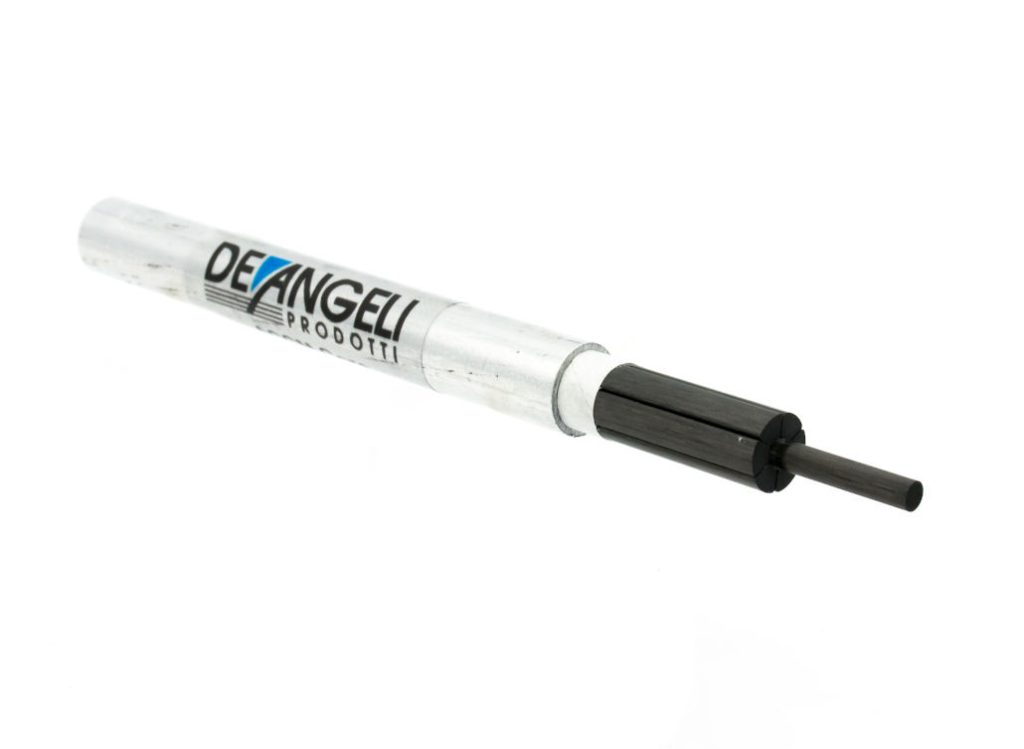
These two conductors have equivalent characteristics on diameters and weight (ACCM is -1,5% lighter than standard ACSR):
| Conductor | Diameter Ø | Weight |
|---|---|---|
| ACSR | 31,50 mm | 1,95 kg/m |
| ACCM | 31,52 mm | 1,92 kg/m |
Comparing the ampacity at continuous operating temperature you can see that the ACCM conductor is higher of +653 Amps that means +60% more than the standard ACSR.
| Conductor | Ampacity |
|---|---|
| ACSR @80°C | 1.039 Amps |
| ACCM @150°C | 1.692 Amps |
Taking in consideration the peak ampacity at 100°C for the ACSR and 175°C for the HTLS.
In this case the ampacity of the ACCM conductor is still significantly higher than the Standard ACSR of + 599 Amps that means + 49% more.
| Conductor | Peak Ampacity |
|---|---|
| ACSR @100°C | 1.226 Amps |
| ACCM @175°C | 1.825 Amps |
In addition to the Ampacity, there are more values that are offered by ACCM:
- Reduction line losses: – 13.078 MWh/year
- Extra generation capacity: + 1.493 kW
- Saving – 1.046 k€/year (- 41,85 M€/40years)
- CO2 reduction: – 5.964 tons CO2/year
Cost reduction: adopting the ACCM Conductor could break even in less than 24 months
The costs presented in this analysis are based on a projected budget for the construction of a 50 km (30 miles) – 380 kV triple bundle single circuit transmission line for alternating current (AC) transmission. These projected costs are calculated considering the specific requirements of this transmission line in terms of conductor length, materials, and other related factors, providing a comprehensive financial overview for the entire project.
This 50 km (30 miles) triple bundle single circuit transmission line would require 150 km (93 miles) of conductor.
The price can vary based on fluctuations in steel and aluminum pricing, here below you can find a comparison:
- ACSR Ø31,50 → 8,50 €/m (4,36 €/kg) → weight: 1,95 kg/m
- ACCM Ø31,52 → 22,00 €/m (11,47 €/kg) → weight: 1,92 kg/m
- TOTAL ACSR → € 1.275.000
- TOTAL ACCM → € 3.300.000
With ACCM the utility save € 1.046.000 per year (40 years = € 41.840.000 savings)
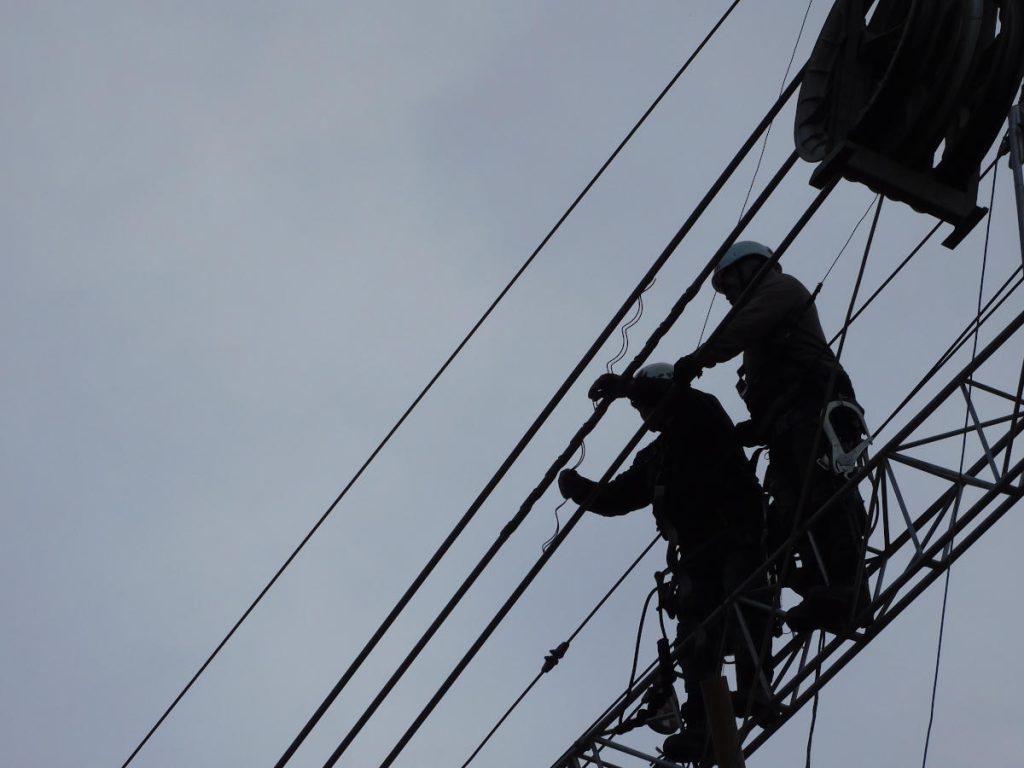
Explanation
Attention: the prices adopted are to be considered budgetary. The simulation is intended as an example to understand the actual costs for the construction of a line similar to the one described in the business case. Costs and savings may therefore vary.
The cost of the conductor can vary based on fluctuations in steel and aluminum pricing, but typically, bulk or larger orders may receive discounted rates. For instance, the ACSR Ø31,50 is priced at 8,50 €/m (4,36 €/kg), while the ACCM Ø31,56 is priced at 22,00 €/m (11,47 €/kg).
Therefore, the corresponding conductor costs (excluding tax or delivery fees) would amount to € 1.275.000 and € 3.300.000, respectively – resulting in a difference of € 2.025.000.
Although a €2,03 million cost delta may seem substantial, the estimations are that the cost of 380 kV transmission lines is in the range from €1,0 to €1,3 million per km.
Considering this cost context, on a 50 km (30 miles) project, the additional expenses could be perceived as negligible, particularly given the growing trend among policy makers and regulators to “right-size” transmission lines in anticipation of future growth.
Furthermore, assuming that you save about €1,046 million on generation capacity and/or CO2 reduction that would benefit other stakeholders, the increased cost of adopting the ACCM Conductor could break even in less than 24 months based on line loss reductions alone of – € 1,046 Million Euros per year, or in a longer period of 40 years – € 41,84 Million Euros.
Additionally, if the terrain allows for it, there is a possibility of reducing upfront structural costs and construction timeframes by exploiting the ACCM Conductor’s capability to span longer distances between fewer and/or shorter structures when compared to steel-reinforced conductors.
Taking a fresh perspective on this example and considering the total project cost for this 50 km (30 miles) line at € 65 million (€ 1,3 million per km), the ACSR option, with a maximum capacity of 1.039 amps, would result in a project cost of € 62.500 per amp.
In contrast, the ACCM alternative, with a capacity of 1.692 amps and line cost € 66,9 million, would significantly lower the project cost to € 39.500 per amp.
In any case, the extra €2,03 million investment would yield a rapid, if not immediate, return with an annual savings of about €1,046 Million Euros per year based on line losses reductions alone – without even factoring in potential additional revenue from increased power delivery during the life of the line.
